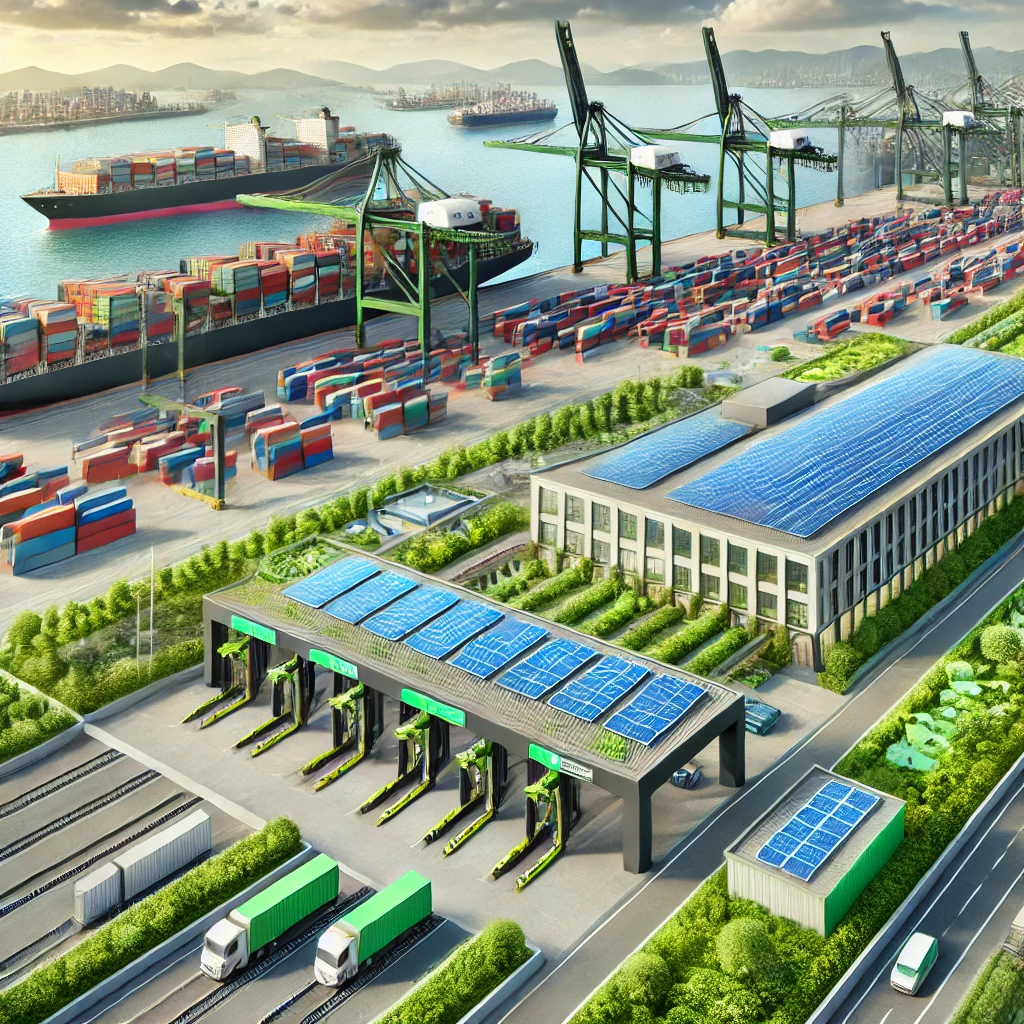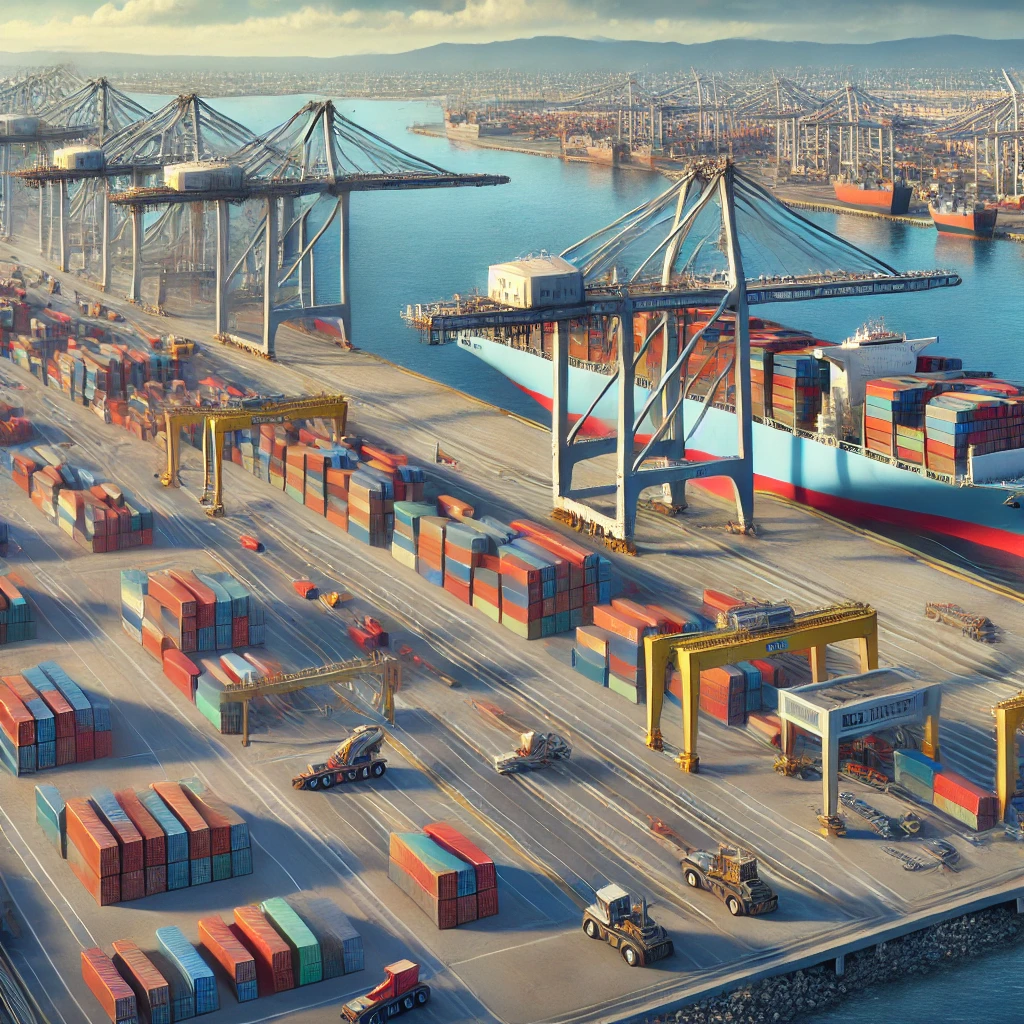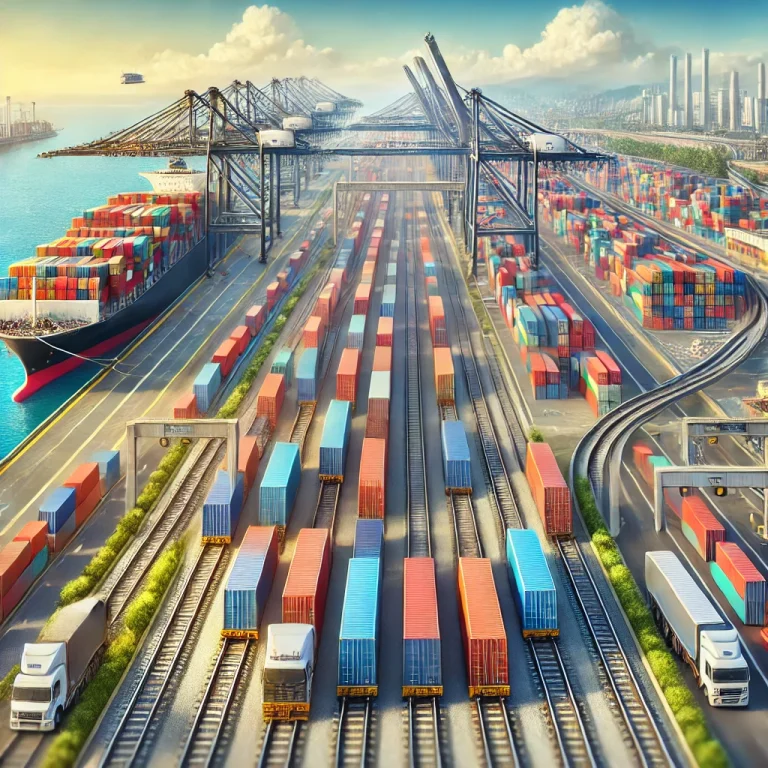Oakland International Container Terminal: A Comprehensive Guide to Port Operations and Logistics

Understanding Oakland International Container Terminal
The Oakland International Container Terminal, also known as OICT, is a key component of the Port of Oakland, handling a significant portion of the port’s container traffic. Its strategic location and cutting-edge infrastructure make it an indispensable hub for international trade and domestic distribution.
Key Features of Oakland International Container Terminal
- Advanced Technology: OICT utilizes state-of-the-art automation and digital systems to streamline operations and enhance efficiency.
- Strategic Location: Situated at 1999 Middle Harbor Road, OICT offers excellent connectivity to major transportation networks.
- High Capacity: The terminal can handle large volumes of containerized cargo, making it a preferred choice for shipping lines and logistics providers.
- Environmental Sustainability: OICT is committed to reducing its environmental impact through various green initiatives.
SSA Marine Terminal Oakland
SSA Marine operates the Oakland International Container Terminal, bringing its global expertise in port operations to this crucial West Coast facility. As an SSA terminal in Oakland, OICT benefits from:
- Experienced management and skilled workforce
- Continuous investment in infrastructure and technology
- Strong relationships with shipping lines and logistics providers
- Commitment to efficiency and customer service
Oakland International Container Terminal Tracking
One of the most critical services offered by OICT is container tracking. This feature allows shippers, consignees, and logistics providers to monitor the status and location of their containers in real-time.
How to Use OICT Tracking
- Visit the official SSA Marine website or the dedicated OICT tracking portal.
- Look for the “Container Tracking” or “Track & Trace” option.
- Enter your container number or booking reference.
- Click on the “Track” button to view the current status of your container.
OICT tracking provides valuable information such as:
- Container location within the terminal
- Estimated time of availability
- Customs clearance status
- Last recorded container movement
For more detailed tracking information, users can also utilize the B58 Tideworks system, which offers additional features and data points.
SSA Terminal Oakland Operations
The SSA terminal in Oakland operates as a hub for various shipping activities, including:
- Container loading and unloading
- Transshipment operations
- Customs clearance
- Container storage and maintenance
The terminal’s advanced infrastructure and efficient processes contribute to its status as a leading facility within the Port of Oakland terminals network.
Berth 58 Oakland
Berth 58 is a crucial part of the Oakland International Container Terminal, providing deep-water access for large container vessels. Some key features of Berth 58 include:
- Modern ship-to-shore cranes for efficient container handling
- Ample apron space for temporary container storage
- Advanced mooring systems for vessel safety
- Direct access to the terminal’s container yard
OICT Vessel Schedule
The OICT vessel schedule is an essential tool for planning shipments and managing supply chain operations. This schedule provides information on:
- Arriving and departing vessels
- Estimated times of arrival and departure
- Berth assignments
- Cargo cut-off times
To access the OICT vessel schedule, visit the official SSA Marine website and navigate to the “Vessel Schedule” section for the Oakland International Container Terminal.
The Importance of OICT in the Port of Oakland Ecosystem
OICT is a vital component of the larger Port of Oakland ecosystem. Its strategic location and advanced capabilities make it an essential link in the global supply chain. Some key points to consider:
- Economic Impact: OICT contributes significantly to the local and national economy by facilitating trade and creating jobs.
- Technological Innovation: The terminal serves as a testbed for new technologies in port operations and container handling.
- Capacity Enhancement: OICT’s operations help increase the overall capacity of the Port of Oakland terminals network.
Oakland International Container Terminal vs. Other Port of Oakland Terminals
While OICT is a major player, it’s important to understand how it compares to other terminals within the Port of Oakland:
- Size and Capacity: OICT is one of the larger terminals, offering significant container handling capacity.
- Automation Level: OICT leads in automation and digital integration compared to some other terminals.
- Specialized Services: Each terminal may offer unique services, with OICT focusing on efficient container operations and advanced tracking systems.
Z985 Terminal: A Key Component of OICT
The Z985 terminal is an integral part of the Oakland International Container Terminal, offering specialized handling for certain types of cargo or vessels. This sub-terminal enhances the overall flexibility and capacity of OICT.
Oakland Port Terminals: An Overview
The Port of Oakland consists of several terminals, with OICT being one of the most prominent. Other terminals include:
- TraPac Terminal
- Matson Terminal
- Everport Terminal Services
Each terminal plays a unique role in the port’s operations, with OICT standing out for its size and advanced capabilities.
Oakland International Gateway
The Oakland International Gateway, located near OICT, serves as a crucial intermodal facility, connecting the port to the national rail network. This proximity enhances OICT’s capabilities by providing efficient rail access for cargo distribution.
Environmental Initiatives at Oakland International Container Terminal
OICT is committed to sustainable operations and environmental stewardship. Some of the key initiatives include:
- Use of electric and hybrid equipment to reduce emissions
- Implementation of shore power for vessels to reduce air pollution
- Water conservation and treatment programs
- Noise reduction measures to minimize impact on surrounding communities
These efforts demonstrate OICT’s commitment to balancing economic growth with environmental responsibility.

The Future of Oakland International Container Terminal
As global trade continues to evolve, OICT is poised to adapt and grow. Some future developments may include:
- Increased automation and AI integration
- Expansion of container handling capacity
- Implementation of blockchain technology for enhanced transparency
- Development of green energy solutions
These developments will ensure that OICT remains at the forefront of port operations and technology.
OICT's Role in Regional Distribution
Oakland International Container Terminal serves as a crucial link in the supply chain for many businesses on the West Coast and beyond. Its strategic location and efficient operations make it an ideal gateway for:
- E-commerce fulfillment centers
- Manufacturing facilities
- Retail distribution centers
- Agricultural exporters
The terminal’s proximity to major highways and rail networks facilitates quick and cost-effective distribution throughout the region.
Customs and Regulatory Compliance at OICT
OICT works closely with U.S. Customs and Border Protection to ensure smooth and compliant operations. Key aspects include:
- Advanced security screening technologies
- Dedicated customs inspection areas
- Expedited clearance programs for trusted shippers
- Compliance with international trade regulations
These measures help maintain the integrity of the supply chain while facilitating efficient trade flows.

Technology Integration at Oakland International Container Terminal
Oakland Terminal Map and Layout
Understanding the layout of OICT is crucial for efficient operations. The terminal map includes:
- Container storage areas
- Reefer container sections
- Customs inspection zones
- Truck queuing and processing areas
- Rail transfer facilities
Visitors and truckers can access the Oakland terminal map through the SSA Marine website or at the terminal entrance.
Accessing Oakland International Container Terminal

OICT is located at 1999 Middle Harbor Road, Oakland, CA 94607. Key access points include:
- Main gate for truck entry and exit
- SSA Berth 58 East Gate for specialized access
- Rail access points for intermodal operations
The terminal operates 24/7, with specific gate hours published on the SSA Marine website.
Conclusion: The Vital Role of Oakland International Container Terminal in Global Trade
In conclusion, the Oakland International Container Terminal stands as a cornerstone of modern maritime logistics and efficient port operations. Its advanced tracking systems, state-of-the-art facilities, and strategic location within the Port of Oakland make it an indispensable asset for global trade. Whether you’re tracking a single container or managing large-scale shipping operations, understanding the capabilities and systems of OICT is crucial for success in today’s interconnected world of commerce.
By leveraging the power of OICT tracking, staying informed about vessel schedules, and utilizing the comprehensive services offered by this SSA terminal in Oakland, stakeholders can optimize their supply chain operations and navigate the complexities of international shipping with confidence. As the Oakland International Container Terminal continues to evolve and innovate, it will undoubtedly play an even more significant role in shaping the future of global trade and port operations on the West Coast and beyond.
